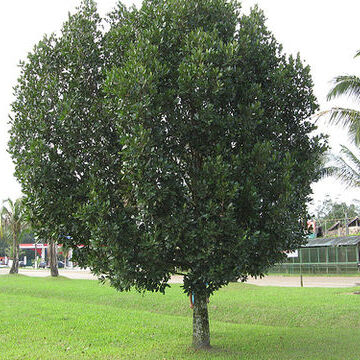Trees [shrubs], polygamous or dioecious, glabrous or hairy, hairs unicellular or multicellular, with glandular canals containing latex. Leaves opposite [alternate], decussate, simple, petiolate; blade: margins entire, surfaces with ± spherical glands containing secretions other than hypericin and pseudohypericin. Inflorescences axillary [terminal], pedicellate. Flowers bisexual or unisexual, homostylous; sepals persistent or deciduous, 2–4[–16], distinct or connate, inner pair often petaloid; petals deciduous, [0–]4–6[–8], decussate [contorted]; filaments basally connate [distinct], slender; anthers eglandular [glandular], dehiscing longitudinally; ovary superior, 1–8-locular; placentation basal; style 1; stigma ± expanded to peltate. Fruits baccate or drupaceous [capsular]. Seeds not arillate; embryo length 1/3+ times seed, cotyledons large.

